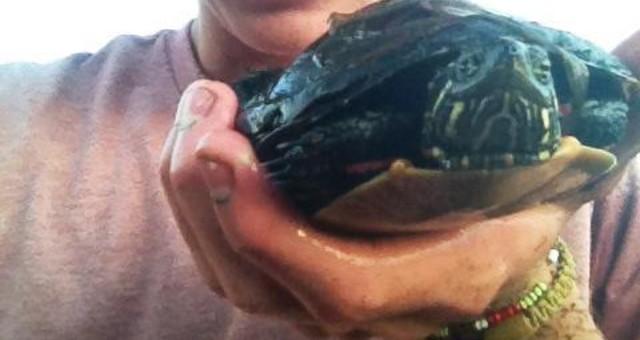April - September 2012
Seasonal movements and habitat use by Snapping Turtles (Chelydra serpentina) and Midland Painted Turtles (Chysemys picta marginata) at Rice Creek Field Station, Oswego, New York
My research focused on tracking the seasonal movements of snapping turtles and painted turtles using radio telemetry at Rice Creek Field Station. Radio transmitters were attached to a male and a female of each species and the turtles were located three or four times a week for about six months. The data collected was used to determine the home range and behavior characteristics of each species and whether there were differences between genders in each species.
By conducting this research, I found that there are behavior differences between snapping turtles and painted turtles. The painted turtles had larger home ranges than the snapping turtles and lived in deeper water with more abundant aquatic vegetation than the preferred habitat of snapping turtles. I also learned that when observing animal behavior using radio telemetry, patience is extremely important. Radio telemetry takes some time to master so being patient while following these turtles around in a canoe was key.
The most memorable research experience would definitely be tracking the turtles with my advisor and the provost. The provost was interested in seeing the fieldwork being done at Rice Creek so she joined us in the field. While tracking the turtles, I got out of the boat to investigate a potential turtle sighting. I was searching the mud for a turtle when my boot got stuck in the soft bottom of the pond. Instead of saving my dry clothing and whatever was in my pockets, I decided to take the plunge into the pond to save the equipment that I needed for my research. I never found the turtle and it was pretty embarrassing to fall in the water in front of the provost and my advisor, but it is something that I can laugh about now.
I grew up in the small town of Red Hook, NY, about an hour south of Albany. I lived on a lake with my family and I was always outside swimming, catching frogs, or playing with the neighborhood kids. I had always loved animals and told my parents I was going to be a zookeeper when I grew up. It was sort of a joke growing up so when I came to SUNY Oswego I did not know what to study. I became an education major and it was not a good fit from day one. I decided I needed to change. Even though I knew it would be hard, I became a Zoology major because it was something I knew I would love doing. Although I could do without the chemistry, all of the other science classes I have taken have been very interesting to me.
As of now, I am not exactly sure what I would like to do in the future. Research is something that is interesting to me, but I am open to any opportunity that puts me in direct contact with animals. After doing my research with turtles and another internship with reptiles, herpetology seems to be a field in which I am very much interested. Conservation biology is another field that appeals to me. Protecting the diminishing wildlife is very important and anything I can do to help out is something I can see myself doing in the future.



